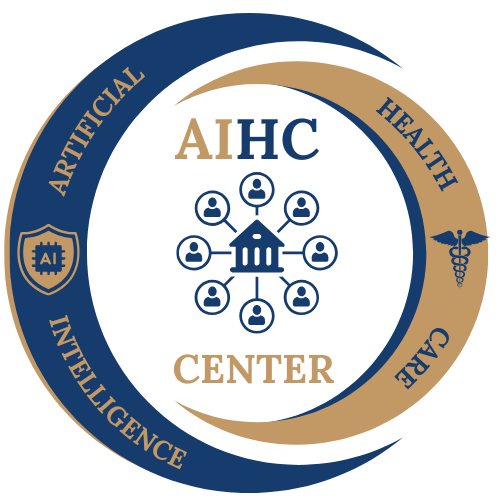Artificial Intelligence (AI) in radiology is a rapidly evolving field that utilizes machine learning algorithms and advanced technologies to assist radiologists in interpreting medical images and improving healthcare outcomes. Here are some common key terms with their definitions used in AI in radiology:

Artificial Intelligence
Artificial Intelligence (AI) refers to the simulation of human intelligence in machines that are programmed to think like humans and mimic their actions. In radiology it particularly involves the machine learning and deep learning, to assist radiologists in the interpretation and analysis of medical images.
Machine Learning (ML)
Machine learning is a subset of AI that involves the development of algorithms and statistical models that enable computer systems to learn and improve their performance on a specific task from data without being explicitly programmed.
Deep Learning
Deep learning is a subfield of machine learning that focuses on neural networks with many layers (deep neural networks). It has been particularly successful in tasks involving image and speech recognition.
Convolutional Neural Network (CNN)
A type of deep neural network designed for processing grid-like data, such as images. CNNs are commonly used in radiology to analyze medical images.
Image Segmentation
Image segmentation is the process of dividing an image into multiple regions or segments, typically to identify and delineate structures of interest within the image, such as tumors or organs.
Feature Extraction
Feature extraction involves identifying relevant patterns or features within medical images that can be used as input for machine learning algorithms. It helps in characterizing structures and abnormalities.
Computer-Aided Diagnosis (CAD)
CAD systems use AI algorithms to assist radiologists in detecting and diagnosing diseases or abnormalities in medical images, such as X-rays, MRIs, and CT scans.
Radiomics
Radiomics refers to the extraction and analysis of a large number of quantitative features from medical images, often with the aim of predicting patient outcomes or treatment responses.
Natural Language Processing (NLP)
NLP is a branch of AI that deals with the interaction between computers and human language. In radiology, NLP can be used to extract information from radiology reports or clinical notes.
Transfer Learning
Transfer learning is a machine learning technique where a model trained on one task is adapted for use on a related task, often used to leverage pre-trained models for radiological tasks.
Cross-Validation
Cross-validation is a technique used to assess the performance of a machine learning model by splitting the data into multiple subsets for training and testing to avoid overfitting.
False Positive (FP)
In the context of AI in radiology, a false positive refers to a situation where the algorithm incorrectly identifies an abnormality or disease that is not present in the image.
False Negative (FN)
A false negative occurs when the AI system fails to detect a true abnormality or disease that is present in the image.

Ground Truth (GT)
Ground truth refers to the accurate and manually verified annotations or labels for a dataset, which serve as a reference for training and evaluating AI models.
Radiologist-in-the-Loop
This concept involves integrating AI systems into the radiology workflow, where radiologists work alongside AI algorithms to make final diagnoses, combining the expertise of both.
Ethical AI in Radiology
Concerns the ethical considerations surrounding the use of AI in radiology, including issues related to bias, patient privacy, and the responsible deployment of AI systems.
FDA Clearance
In the United States, the Food and Drug Administration (FDA) assesses and clears AI-based medical devices and algorithms for clinical use, ensuring their safety and effectiveness.
HIPAA Compliance
The Health Insurance Portability and Accountability Act (HIPAA) sets standards for the protection of patient health information. AI systems in radiology must adhere to HIPAA regulations to protect patient privacy.
Deep Learning Architectures
Deep learning models commonly used in radiology include Convolutional Neural Networks (CNNs), Recurrent Neural Networks (RNNs), and their variants, which are well-suited for image analysis and sequential data processing.
Transfer Learning
Transfer learning involves using pre-trained AI models on large datasets for a specific radiological task, which can accelerate model development and improve performance.

Fusion of Multi-Modal Data
AI can combine information from various imaging modalities (e.g., MRI, PET, CT) or even non-imaging data (e.g., clinical records) to provide a comprehensive assessment of a patient’s condition.
Radiogenomics
Radiogenomics explores the relationship between imaging features and genomic data to identify associations between radiological findings and underlying genetic factors.
Explainable AI (XAI)
XAI aims to make AI models in radiology more transparent and interpretable, helping radiologists understand how the AI arrives at its conclusions.
Data Annotation
The process of labeling and annotating medical images for training AI models. High-quality, annotated datasets are crucial for AI development in radiology.
Validation and Evaluation Metrics
Radiologists use various metrics like sensitivity, specificity, accuracy, ROC curves, and Dice coefficients to assess the performance of AI algorithms in detecting or diagnosing medical conditions.
Interoperability
Ensuring that AI systems can seamlessly integrate into existing healthcare IT infrastructure and electronic health records (EHR) systems.
Data Governance
Establishing protocols and standards for the collection, storage, and sharing of medical imaging data, considering both regulatory and ethical considerations.



